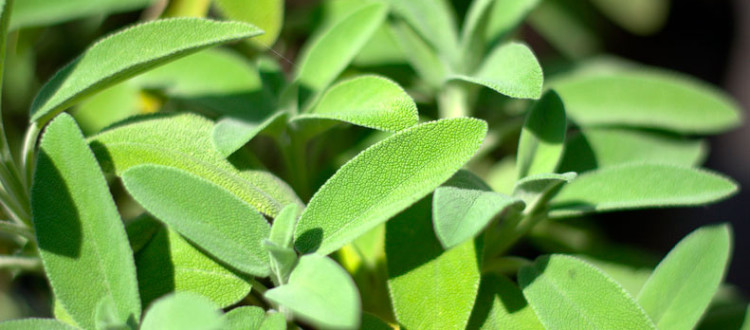Sage
Sage, (Salvia officinalis) is a woody stemmed evergreen perennial herb also known as ‘common sage’ and ‘garden sage.’ It has aromatic, thick veined light grey leaves that feel velvety to the touch, and when it flowers, its blossoms are blue to purple. Native to the Mediterranean, sage is a member of the Lamiaceae (mint) family. Sage has become naturalized in many countries and many different varieties have been developed, including pineapple sage, lemon sage, and others.
Sage is considered to be an “essential” herb in Britain, along with parsley, rosemary and thyme. It has a flavor that is savory and sweet, with a peppery taste that makes it ideal for a wide number of dishes and seasonings. Sage is purported to have a number of health benefits, as evidenced by its Latin name, Salvia officinalis, derived from the Latin word salvere, which means ‘to be saved.’
How to Plant
Sage likes sandy, well drained soil with a pH between 6.0 and 7.0 and prefers full sun. Plant in the spring or fall with about 2 feet between seedlings. Sage can grow fairly large, covering a square yard across and possibly that high as well. Be sure the soil has a healthy amount of nitrogen for best results.
Establish a regular watering pattern, allowing the soil to almost dry out completely before watering. Avoid over-watering to prevent root rot.
Sage attracts bees, butterflies and some birds, but also attracts whitefly, spider mites and mealy bugs. The most common disease that affects sage is powdery mildew.
Fertilizing
Sage can be grown with a balanced fertilizer, such as a 3-1-1, but some gardeners believe that for best results sage should be grown in soil low in nutrients so as to boost oil production that enhance the flavor. Well-fertilized plants, some say, look nice but the leaves lack flavor.
Harvesting
Wait about 2 months after planting your sage to begin harvesting leaves. Leaves can be pinched off for immediate use, or clip an entire branch. If your intent is to dry the herb, hang the branches upside down in a warm, airy spot, then strip the leaves into a jar and close the lid tightly. Avoid harvesting more than half of the leaves from the plant at a time or the plant will stop producing.
Recommendations for Use
- Sage is a popular seasoning for meats, poultry and is a common seasoning in stuffing at Thanksgiving
- In Medieval times sage was prepared as a tea to increase fertility in women while Hippocrates recommended it to improve digestion
- It is reportedly a powerful antioxidant as well as antibacterial

